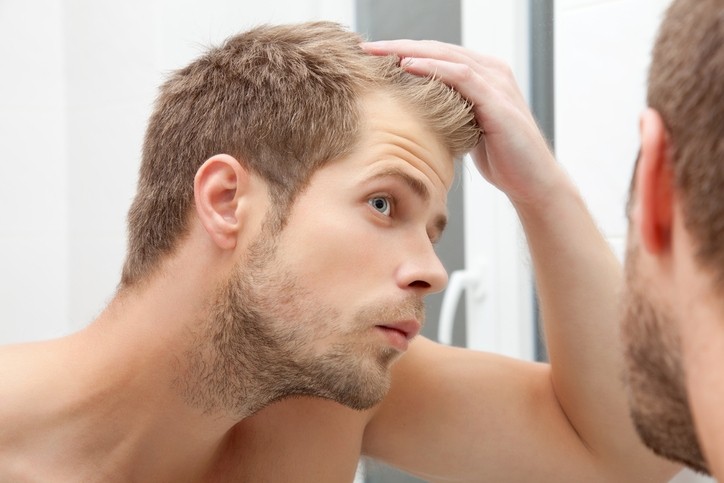- Kartaltepe Mahallesi İncirli Caddesi Limon Çiçeği Sokak No: 1 34145 Bakırköy İstanbul
- +90 541 548 52 47

What Do We Know About Trichotillomania?
27/09/2022
Hair Mesotherapy or PRP? Which Is Better?
27/09/2022Hair loss is a common problem dominated by anxiety and psychological stress. The methods we use unconsciously to prevent this may cause us to experience more hair loss rather than controlling the problem.
Hair cosmetics includes care and styling applications. The effects of cosmetic products and applications on hair health remain a topic of discussion. Hair with forked ends, thinned, dull-looking hair that has lost its vitality is considered to be the leading signs of hair loss. This is the first way we get the signals of the deterioration of hair health, and in general, cosmetic measures are our first choice in the way of solution. Shampoos, moisturizing care products, hair dyes, high-temperature stylers have an important place in our care routines in order to achieve a more beautiful and lively appearance in the hair. Some of these may pose a risk to people with sensitive hair and scalp. In addition, the conscious application of the right care products can play a supportive role in the treatment of patients with alopecia and in the care process after hair transplant surgery. So how do we distinguish it? In order to understand the effects of cosmetics on hair, we first need to have an idea about the anatomical structure of the hair.
Let’s Get to Know Our Hair Strands
There are two layers that support the hair fiber from the inside and outside.
- What is a Cuticle? What Does It Do?
The cuticle is the protective outer layer of our hair strands. It has a thick and resistant structure. It has a smooth structure that prevents friction between hair bristles. It is 6 to 8 layers thick. Keratin is made up of protein and lipids. This makes the hair soft. Hair dye, perm, and high-temperature styling agents damage the structure of the cuticle .
- What is the cortex? What Does It Do?
The cortex makes up 75% of the hair fiber mass. Hair strands get their inner strength from the cortex. The cortex, which has important duties such as providing strength, moisture and flexibility in the hair strands, can also be damaged by high-temperature applications, just like the cuticle. Due to the damaged cortex, the hair takes on a more dry and lifeless appearance.
If we want to turn the cosmetic products or applications we apply to an advantage in our hair health to prevent hair loss and achieve a more beautiful appearance, it would be beneficial to listen to the experts and scientific researches, not the recommendations.
See what scientific researches about hair cosmetics tell us:
- It is recommended to use sulfate-free shampoo on extremely damaged or sensitive hair and after hair transplant surgeries.
- Anti-dandruff shampoos , most of the people reported complaints of hardening and drying of their hair . In cases where it is necessary to use dandruff shampoo, it is recommended to apply conditioner after shampooing.
- Hydrolyzed proteins are said to be hair-repairing and natural moisturizers, and can be obtained from animal or vegetable sources.
- In a recent study investigating the effect of mineral oil, sunflower oil and coconut oil on preventing hair damage; It has been reported that coconut oil, which is used as a pre- and post-wash agent, is the only oil that reduces protein loss in damaged and undamaged hair.
- Temporary hair dyes, available as gel mousse and spray, are said to be safer on sensitive hair as they do not penetrate the cuticle layer. It has been reported that semi-permanent hair dyes cause minimal damage, while permanent dyes cause more hair damage.
- It has been stated that the application of high-temperature styling devices to the hair strand can cause protein loss and hair damage.
How Should be Cosmetic Care After Hair Transplantation?
The most important issue to be considered is to strictly follow the care instructions given by your doctor, in order to ensure that the healing process can be overcome quickly and comfortably after hair transplant surgeries, and that the procedure will not be damaged. The first hair wash is performed on the 3rd or 4th day of the surgery. The scalp should not be exposed to pressurized water directly, it should be washed gently without rubbing, and care should be taken with the shampoo to be used during washing. For this reason, the first wash should be under the supervision and control of health personnel. In order to reduce the effects of crusting and redness after hair transplantation, the prescribed lotion and shampoo should be used regularly. After the procedure, the patient should choose sulfate-free shampoos for hair washing while creating a new care routine.




